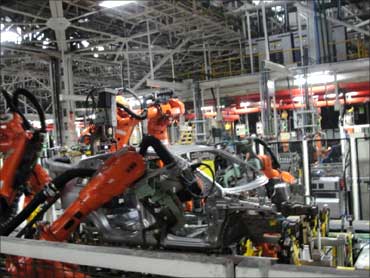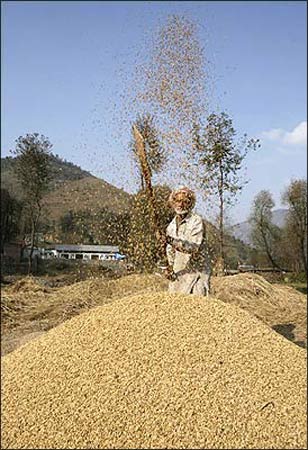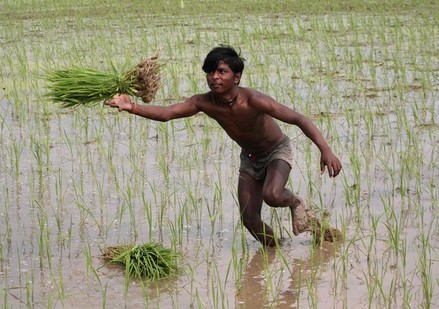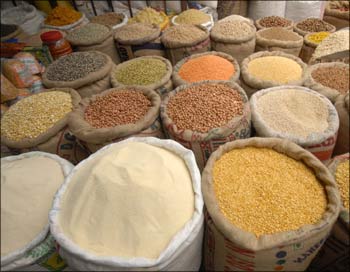 | « Back to article | Print this article |
Why food is costlier and TVs cost less
Twenty years ago, a Maruti 800, with an air-conditioner fitted, cost a little less than Rs 2 lakh (Rs 200,000). Today it costs about Rs 2.5 lakh (Rs 250,000).
Twenty years ago, a branded 1.5-tonne window air-conditioner cost about Rs 30,000; today, you can get a split AC unit for that price. Then, Videocon was offering large refrigerators for more than Rs 30,000; you can get better units today for much less.
TV prices have crashed too, and one can go on with this list. In a period when salaries in the corporate sector have gone up by about 15 per cent annually, and inflation-adjusted per capita income has roughly trebled, consumer durables of virtually every hue have become infinitely more affordable.
Why has that not happened with onions?
Click NEXT to read on . . .
Why food is costlier and TVs cost less
In 1980, Indira Gandhi swept back to power on the back of an election campaign that talked of onions costing the then stratospheric sum of Rs 5 per kg. Now it is Rs 70.
Home-grown apples (not the ones from Down Under) cost over Rs 100 in Delhi, and lentils of various sorts have also hit triple-digits.
These price increases far outdo income increases, rapid though they have been for most people, and it is simply not enough to seek palliatives in short-term measures like raising interest rates.
Nor is it enough to say that there has been demand growth for proteins because of higher incomes.
There has been comparable demand growth for eggs, but they have not seen similar price inflation.
Click NEXT to read on . . .
Why food is costlier and TVs cost less
Nor is it good enough to argue that there are global shortages in commodities -- both cyclical (as in sugar) and structural (lentils).
The truth is that we face inflation in agricultural products, on a scale that we don't see in manufactured products, because agriculture has not been reformed, whereas industry has.
There is talk of collusion in onion prices -- which raises the question of reforming trade. Everyone knows that the difference between farmgate and retail prices is unusually high in India, in part because of multiple intermediaries.
Click NEXT to read on . . .
Why food is costlier and TVs cost less
But the country has not been able to benefit from supply chain efficiencies because organised retail has not been allowed to grow, and to link producer and consumer prices more closely by squeezing out middlemen.
Politicians who for two decades have opposed reforms in both agriculture and trade will be loath to own up responsibility for today's food price inflation; they should know that the situation will get worse if reforms are not introduced even at this late stage.
Twenty years ago, the Congress capitalised on a macro-economic crisis to introduce far-reaching economic reforms; industrial licensing and import licensing were abolished within days of each other.
Click NEXT to read on . . .
Why food is costlier and TVs cost less
Reform of agriculture is admittedly more sensitive; India has millions of farmers who barely eke out a living, they have no cushion if reforms squeeze them.
But the failure to reform hurts farmers too; they have needed repeated loan write-offs, while there have also been farmer suicides and other signs of extreme distress. Reform of agriculture and trade are needed urgently, and it has to be intelligently designed.
Some things are obvious. India's land productivity is low in most crops. If there have been large-scale suicides by cotton farmers in Vidarbha, but not in cotton-growing Gujarat, the explanation is that Gujarat's cotton productivity is much greater.
Click NEXT to read on . . .
Why food is costlier and TVs cost less
Then, India loses up to a third of its harvest of different crops, because of poor storage and distribution. This is criminal waste, but the country has done little to create cold chains.
The prime minister should do for agriculture and domestic trade what he did for industry and export trade 20 years ago.






